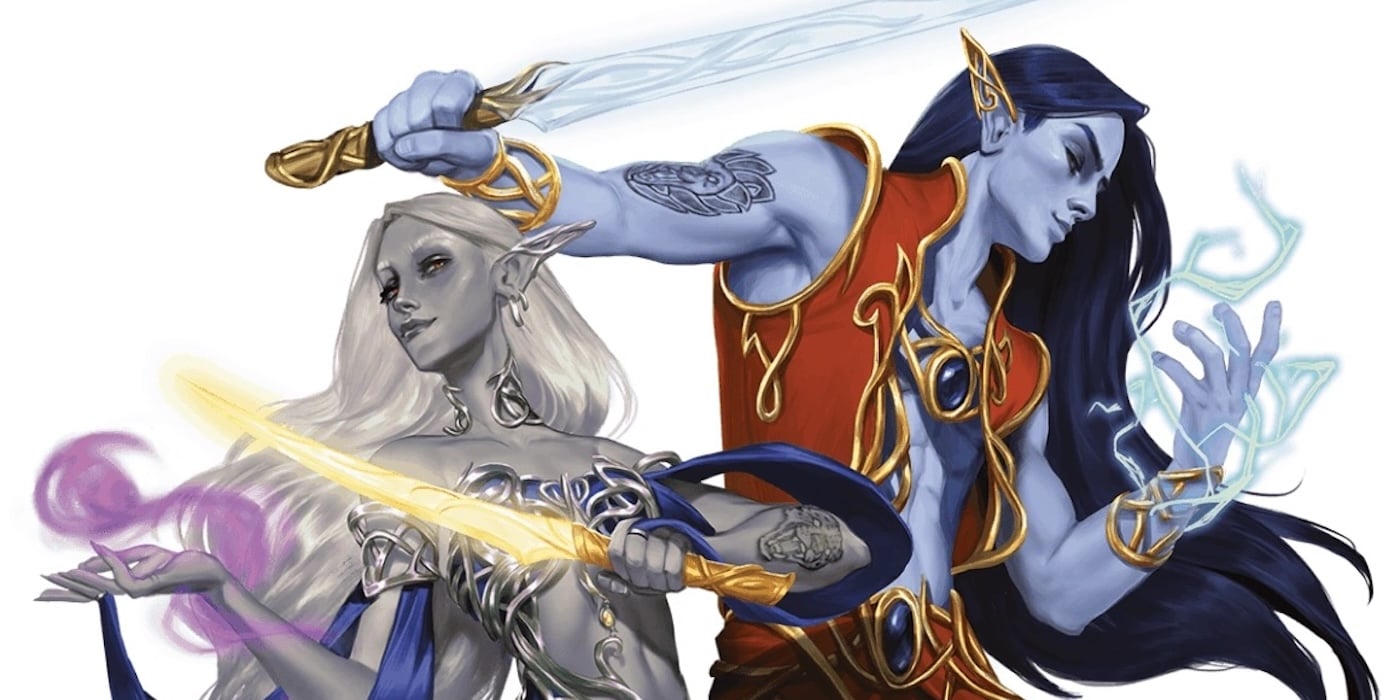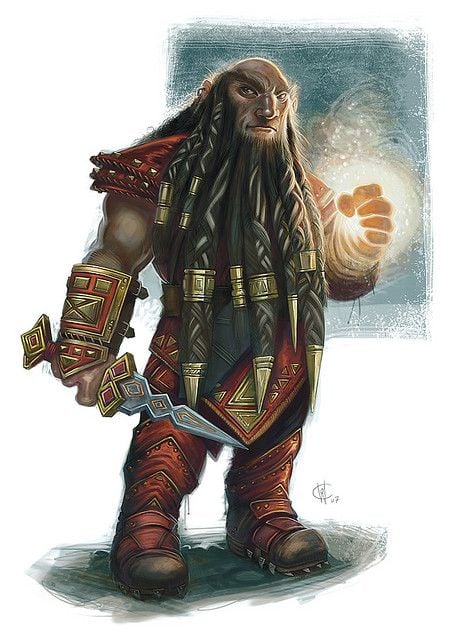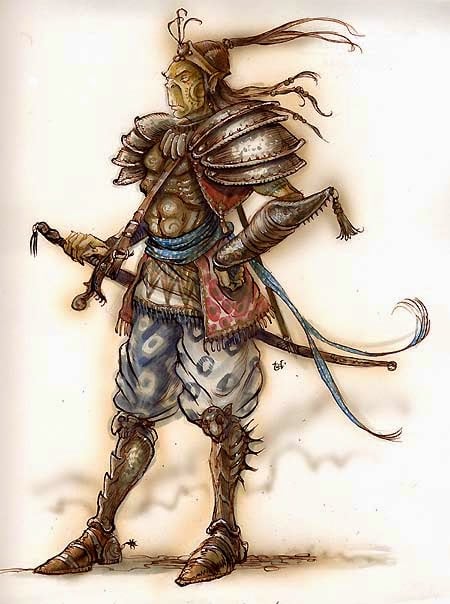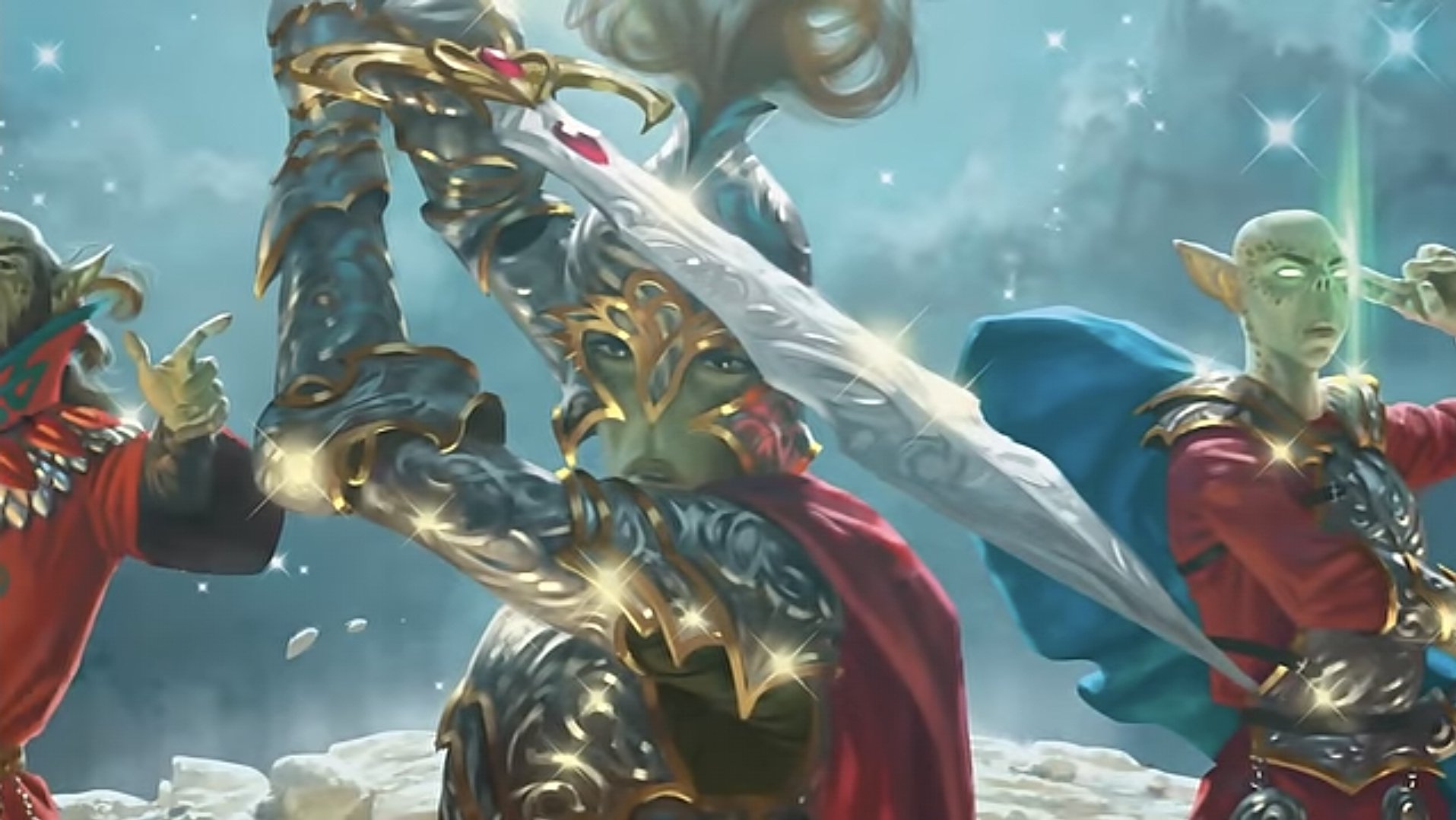D&D: The Bladesinger Wizard Playtest – More Blade, More Song

The Bladesinger Wizard gets a fresh coat of paint in the Forgotten Realms playtest, now with more blade than ever before. Check it out!
D&D 5.5E pushes 5E forwards—you can see some of the design shifts that have been quietly building up in the background come to the fore. But the new books make a leap forward, so you can tell the difference, even looking back at some of the older stuff from Xanathar’s Guide to Everything. Or, more relevant to today’s article, the Bladesinger Wizard, which appears in Tasha’s Cauldron of Everything but first appeared in the Sword Coast Adventurer’s Guide.
And now, in the Forgotten Realms playtest, the Bladesinger Wizard gets a more “modern” update. It’s sort of a microcosm of how 5.5E has evolved out of 5th Edition. Because there are a few small but important changes. From quality of life upgrades to a new trick or two, the new Bladesinger builds on the bones pf 5E but stands out. You’ve got the best of both worlds, basically.
The same goes for 5.5E and 5th Edition. A lot of small but important changes. A few quality of life updates that increase damage, overall. And again, make things play the way you might have been hombrewing ’em in the first place. So with all that in mind, what exactly is a Bladesinger Wizard?
Bladesinger Wizard Playtest – Swords AND Sorcery? In This Economy?
Bladesinger is a tried and true Forgotten Realms tradition. In older editions, Bladesinging was an elven exclusive. Though now, the tradition of Bladesinging is an ancient elven art that has since spread to other cultures. Because there’s always gonna be someone who buys a sword at the mall. Not that every Bladesinger does that, some are graceful and noble, I’m sure:
“Bladesingers master a tradition of wizardry that incorporates swordplay and dance. In combat, a Bladesinger uses a series of intricate, elegant maneuvers that fend off harm and allow the Bladesinger to channel magic into devastating attacks and a cunning defense. Many who have observed a Bladesinger at work remember the display as one of the more beautiful experiences in their life, a glorious dance accompanied by a singing blade.
Bladesinging is strongly associated with the ancient elven societies that first mastered the art and coined the term. Even today, most Bladesingers still hail from old elven realms, such as Cormanthyr, or from non-elven societies that share land and history with elves, such as the Silver Marches. Wherever they hail from, Bladesingers are known for taking their talents all across the Realms in order to help common people and perform heroic deeds. Few communities greet the arrival of a Bladesinger as anything but a good omen.”
They’re like an anti Scion of the Three Rogue. Everyone’s always glad to see a Bladesinger turn up. And it’s an archetype that hails back to the original gish. Someone who uses swords and magic? At the same time? How is that possible? 5.5E makes it surprisingly easy.
Attacking With Intelligence – A Cunning Plan
As mentioned previously, the Bladesinger Wizard, in the playtest at least, is only subtly different from its previous incarnation. But those subtle differences are important. Take the primary feature which gives the class its identity: Bladesong. At level 3 you gain the ability to use the iconic fighting mode of the Bladesinger. It provides three main benefits:
- Agility – This is slightly changed from older versions. You still get to add your Intelligence bonus to your AC, but only if you’re wearing NO armor and not using a shield, whereas before you could pair this feature with Light armor and be fine. You do still get a bonus 10 feet of Speed, though.
- Bladework – This is a brand new ability under the main bladesong feature, and a welcome one at that. With bladework, you can make attacks with your Intelligence modifier for the attack and damage rolls instead of Strength or Dex. This applies to any weapon you’re proficient with, too, so you could theoretically use Bladesong with a Longbow oor the like if you’re proficient, say by being an elf.
- Focus – Finally, you get to add your Intelligence bonus to Concentration checks.
The advantage on Acrobatics checks is gone. But honestly, that is worth the trade of getting Bladework. That lets you pretend you’re a Pact of the Blade Warlock for a solid minute. And you can use Bladesong up to your Intelligence modifier times per day instead of your proficiency bonus times per day. So you’ll start at 3 per day and quickly get up to 4.
You also gain a revamped Training in War and Song. Now, this feature gives you proficiency with all Melee Martial weapons that don’t have the Two-Handed or Heavy property. Not just one. So you can Bladesing with even more weapons.
Bladesinger Wizard – The More Things Change, the More They Stay the Same
While level 3 might have seen some pretty sizable changes, the later levels are unchanged. At level 6, you still gain Extra Attack, allowing you to attack twice with one Attack Action. And you can still swap out one of those attacks for a cantrip. This will probably be quite strong when paired with the new True Strike cantrip, which will let you deal bonus, scalable radiant damage.
Level 10 has an unchanged Song of Defense – which lets you spend a Reaction while your Bladesong is up to burn a spell slot and reduce the incoming damage by five times the spell slot level. And you’re still almost always better off casting Shield or Absorb Elements, just as before. So maybe they should have gone back to the drawing board with this one.
At level 14, though, Song of Victory is different, because it kinda is already there as part of the level 3 feature. Instead of being a mediocre damage bonus, Song of Victory lets you make an attack with a weapon as a Bonus Action after you cast a spel that has a casting time of an action. So even when you cast Fireball, say, you can still engage in some swordplay. This is a HUGE change for Bladesingers.
Bladesinger Wizard Playtest – The Same or Better in Every Way
So yeah, the Bladesinger Wizard is basically improved or, at worst, the same as it ever was at every turn. The feedback I’d leave is that the defense feature at level 10 is a little anemic for what it costs/what it does. But that’s just me.
Your opinion is the one that really matters. WotC wants to know what the community thinks. And so they’ve invited you to take the Forgotten Realms Unearthed Arcana Survey. Let them know what you think of all the classes (including the Bladesinger Wizard) in the playtest and shape the future of D&D.
Bladesinging not to be confused with bladesingeing!







